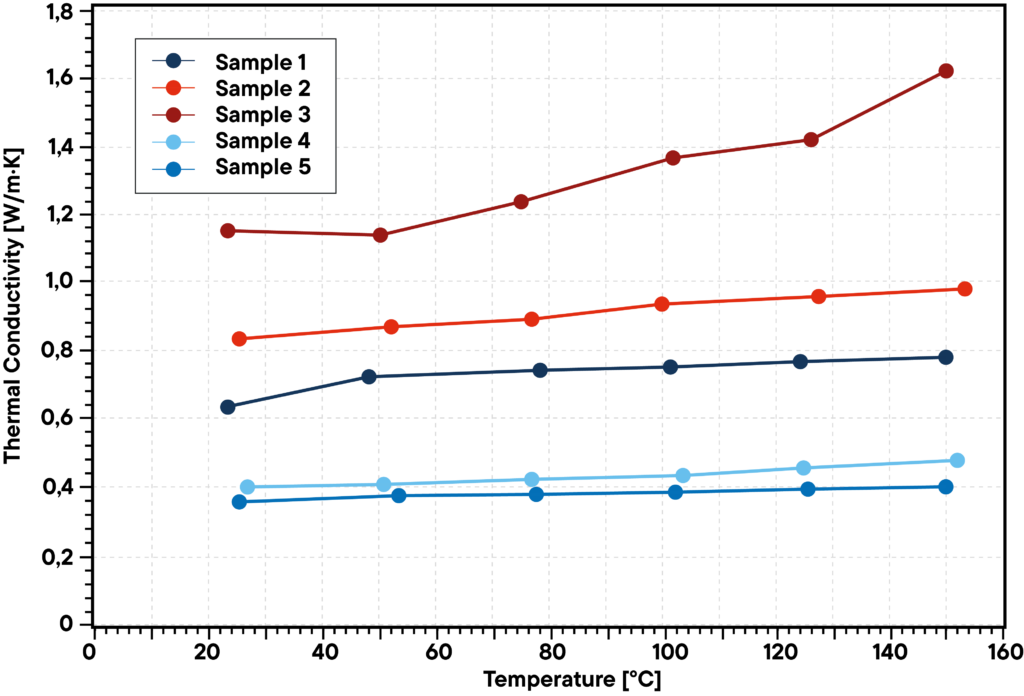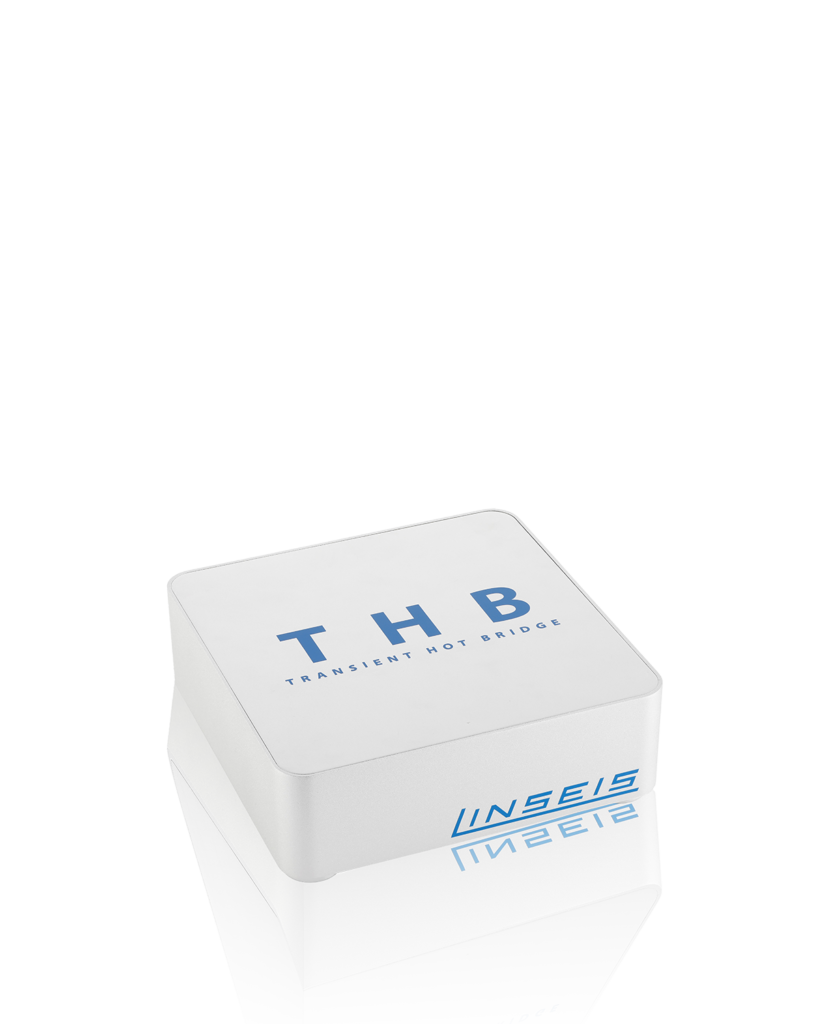Rubbers have good dynamic properties, a high strength, elasticity and rebound resilience. By adding different polymers rubber compounds are developed which have superior properties, such as a good chemical resistance, flame-resistance and oil-resistance.
Thus, the rubber compounds have a broad range of application areas, like the automotive sector, food industry, chemical industry and mechanical engineering. Examples of applications are motor bearings, O-rings, tires, shoe soles, cable sleeves, floor coverings, seals for windows and doors. Some of these require the knowledge of the thermal properties like the thermal conductivity.

The plot shows a measurement of the thermal conductivity by THB Ultimate (THB L56 Ultimate) of different rubber compounds. For that, the sensor was placed between two sample parts and the sample parts were pressed together for a good contact to the sensor. This setup was placed in a furnace where the measurement was performed from room temperature to 150 °C.
The plot shows that the different compounds have different or rather similar thermal conductivities, respectively. The thermal conductivity increases for all samples in the measured temperature range, as it was expected.

